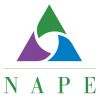Data Dashboards
Borrowing from the world of business intelligence, NAPE has developed data dashboards to assist state and local education agencies in making their data understandable, meaningful, and actionable. These dashboards can be used to compare enrollment of concentrators in CTE programs at the secondary and postsecondary levels, disaggregated by career cluster and gender. The national CTE data dashboards can show you how your state enrollment compares to other states and to the nation.
At the 2013 Data Quality Institute, hosted by the U.S. Department of Education, Office of Vocational and Adult Education, NAPE CEO Mimi Lufkin and Krishnan Sudharsan from Michigan Department of Education introduced Data Dashboards. Also visit the Data Quality Institute webpage for more information.
NAPE Nontraditional Occupations Crosswalk
Using 2006 employment data from the Bureau of Labor Statistics, NAPE designated each 2000 Classification of Instructional Program (CIP) as nontraditional or nontraditional (coded with an explanation) and then crosswalked each CIP to a Career Cluster and Career Pathway. NAPE recommends that States use this crosswalk to identify nontraditional CIP codes/programs for use in collecting data for the Perkins IV nontraditional core indicators. CIPs are also identified as part of the STEM Equity Pipeline STEM-related cluster for project data collection purposes. Access Crosswalk
State CTE Profiles
Drawing from several sources, NAPE creates a CTE profile for each state and the nation each year. The profiles provide the following information for both the secondary and postsecondary levels:
- Brief description of the CTE delivery system
- Perkins performance indicators
- Career cluster enrollment by gender
- State contact information
NAPE Perkins IV Implementation Surveys
NAPE has conducted surveys of the states to determine how the nontraditional training and employment and special population’s provisions of Perkins IV are being implemented. The survey results are compiled into a generic comprehensive report regarding the status of the implementation of the special population’s provisions of Perkins IV. NAPE Members can read the survey summaries from 2000, 2002, 2004, 2008, and 2010 by clicking here.
Other Tools
- Carl D. Perkins Vocational and Technical Education Act Reports to Congress on State Performance provides state profiles for each of the core indicators (academic attainment, attainment of diplomas or degrees, placement and retention in further education or employment, and participation and completion of non-traditional training programs) for secondary and postsecondary programs. Also included are federal allocations, enrollment by gender, and a brief description of program improvement and data quality efforts for each state.
- The U.S. Department of Education website, ED Data Express, consolidates relevant data collected by the Department from several different sources and provides search tools that allow users to create individualized reports. Users will be able to access data collected by several of the Department’s program offices, the National Center for Education Statistics, and The College Board. Data include results of state tests and the National Assessment of Educational Progress, graduation rates, and school accountability information.
- The National Association of State Directors of Career and Technical Education Consortium State CTE Profile webpage provides an interactive state map that enables you to learn more about CTE in the state of your choice. You’ll find school and enrollment data, information on funding, accountability indicators, state contact information and more for secondary, postsecondary and adult CTE.
- At the STEM Education Resource website, you can discover the answers to important questions on STEM education and careers using the information from the National Science Board’s Science and Engineering Indicators report.
- The 2013-14 Civil Rights Data Collection (CRDC) is a survey of all public schools and school districts in the United States. The CRDC measures student access to courses, programs, instructional and other staff, and resources—as well as school climate factors, such as student discipline and bullying and harassment—that impact education equity and opportunity for students.

